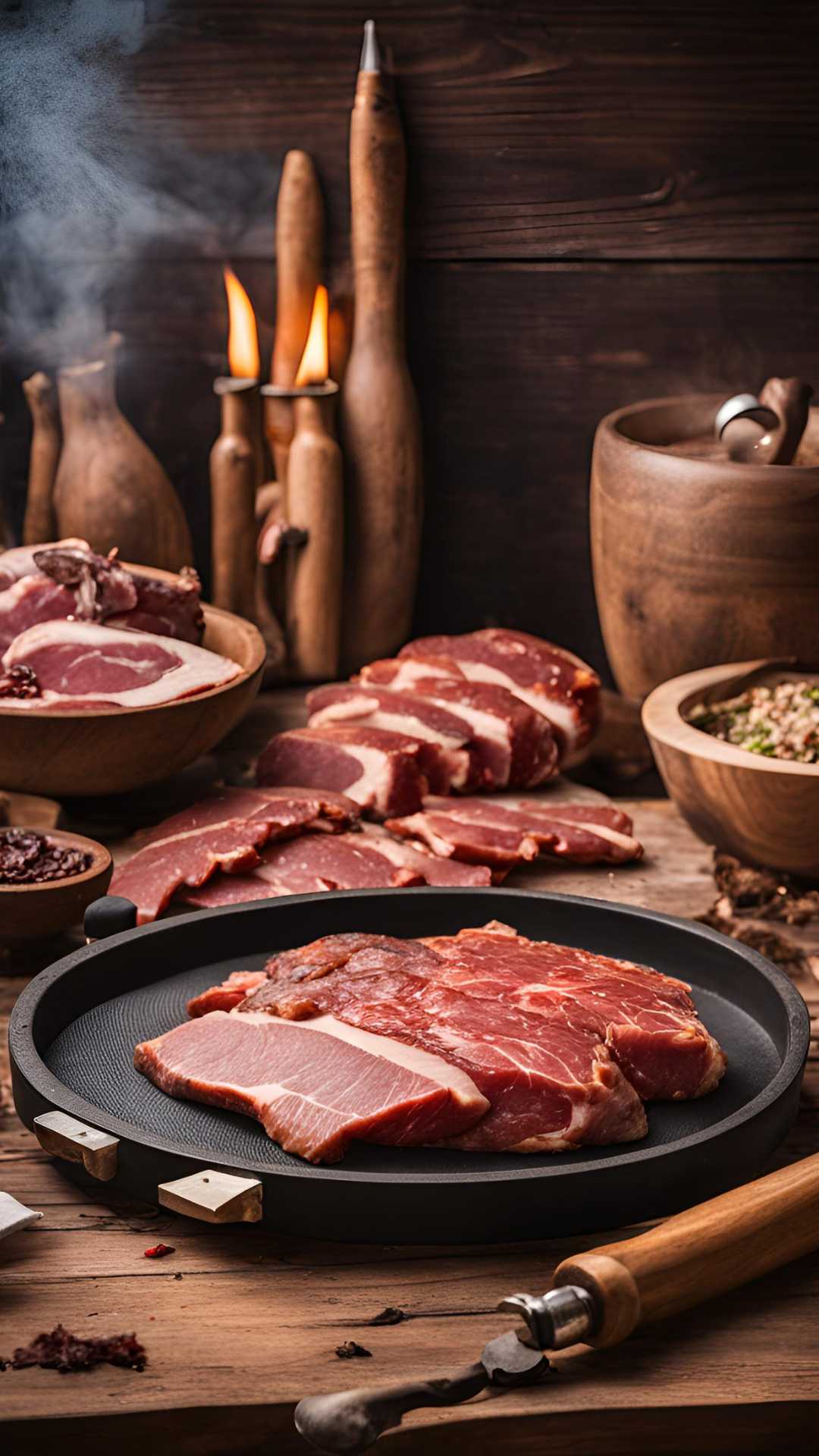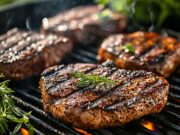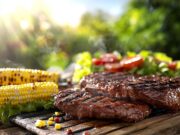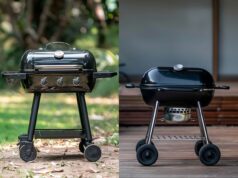- Key Takeaways:
- Why Smoke Meat?
- Essential Equipment for Smoking Meat
- Different Types of Meat for Smoking
- Preparing the Meat
- Choosing the Right Wood
- Setting Up Your Smoker
- Temperature Control
- Smoking Times and Techniques
- Basting and Mopping Techniques
- Checking for Doneness
- Troubleshooting Common Issues
- Food Safety Considerations
- Frequently Asked Questions
Smoking meat is a timeless culinary tradition that enhances your dishes with rich flavors and enticing aromas.
You can explore the numerous benefits of smoking, along with the essential equipment required, the types of meat suitable for smoking, and the preparation techniques necessary for achieving the perfect smoke.
By understanding wood selection, temperature control, and how to troubleshoot common issues, you will be equipped to create delicious, smoky dishes.
Engage with this art form and uncover the secrets to mastering the skill of smoking meat.
Key Takeaways:
- Smoking meat adds unique flavor and tenderness, making it a popular and enjoyable cooking method.
- Proper equipment, wood, and temperature control are essential for successful smoking.
- Experiment with different meats, seasonings, and techniques to find your perfect smoked meat.
Why Smoke Meat?
The appeal of smoking meat lies not only in the rich, smoky flavor it imparts but also in the numerous benefits it offers to meat enthusiasts and chefs alike. Smoking infuses various meats, such as pork, beef, chicken, and fish, with a depth of flavor that traditional cooking methods often cannot achieve, transforming a simple cut into a culinary masterpiece. This technique allows for diverse cooking styles and methods, enhancing tenderness and taste while ensuring adherence to food safety standards.
The unique smoking process does more than enhance the flavor profile; it also aids in preservation. The natural preservatives found in the smoke inhibit bacterial growth, making smoked meats an excellent option for long-term storage. This means you can enjoy delicious feasts even when fresh options are limited.

Beyond the taste and longevity, there’s a certain charm in the ritual of smoking meat, where you can experiment with different woods and seasonings, adding your personal touch to every meal. Smoked meats provide a delightful balance of enjoyment, craftsmanship, and safety that appeals to cooks of all skill levels.
Essential Equipment for Smoking Meat
To successfully smoke meat, investing in the right equipment is crucial for achieving your desired flavors and results. A quality smoker, whether electric, charcoal, or wood, serves as the heart of your smoking process, allowing for precise temperature control and effective smoke infusion. Complementing your smoker with essential tools, such as a reliable thermometer, ensures that your meats are cooked to perfection while preventing food safety issues. Regular cleaning and maintenance of your equipment are also vital in sustaining performance and preserving flavor integrity.
When considering the types of smokers available, you have several options to choose from.
- Electric smokers offer convenience and consistency, making them user-friendly for beginners,
- charcoal smokers provide that classic smoky flavor and versatility.
- Wood smokers, often referred to as stick burners, allow for greater flavor customization but require more hands-on management.
Regardless of the type of smoker you select, utilizing thermometers is essential to maintain the ideal cooking temperature, which is critical for achieving tenderness and flavor.
Implementing routine cleaning practices, such as removing grease buildup and checking for clogs, is essential to ensure safety and prolong the life of your smoker, ultimately enhancing your overall smoking experience.
Different Types of Meat for Smoking
Regarding smoking meat, you will find that different types exhibit unique characteristics that can significantly affect your cooking experience. Popular choices for smoking include brisket, pork shoulder, ribs, chicken, and even fish, each contributing its distinct flavor profile and texture. Understanding the specific requirements and ideal smoking techniques for each type of meat is essential for achieving tender, juicy results that highlight the depth of flavor produced by the smoking process.
For example, brisket, known for its rich marbling, becomes incredibly tender when smoked low and slow, requiring patience throughout the cooking process. Pork shoulder, with its higher fat content, benefits from an extended smoking time, often enhanced by a flavorful rub to elevate its naturally sweet flavor. Ribs, whether pork or beef, thrive on a balance of smoke and seasoning, and employing a good wrapping technique helps maintain moisture.
Chicken, being leaner, demands careful attention to prevent dryness, while fish requires a lighter approach regarding smoking time and temperature due to its delicate nature.
Each type of meat responds differently to various wood types, spices, and sauces, making experimentation an exciting aspect of the smoking journey.
Preparing the Meat
Properly preparing the meat is a crucial step in the smoking process that ensures maximum flavor and tenderness. By seasoning and marinating your selected cuts, you not only enhance their taste but also help tenderize the fibers, allowing the flavors to penetrate deeply. A well-crafted recipe tailored to each type of meat can incorporate a mix of spices and herbs that complement the unique characteristics of pork, beef, or chicken, ultimately setting the stage for a delicious smoky feast.
You can explore various methods when preparing meat for smoking. For example, using a dry rub of paprika, garlic powder, and brown sugar can create a robust flavor profile for ribs, while a marinade of soy sauce, honey, and ginger can elevate chicken significantly. Trimming excess fat from cuts like brisket enhances the smoking experience by promoting even cooking and preventing flare-ups. Additionally, consider using wood chips with distinct flavor notes, such as hickory or applewood, to further customize the meat’s taste.
By experimenting with these techniques and flavor combinations, you can refine your smoking craft for a mouthwatering outcome.
Choosing the Right Wood
The choice of wood is a fundamental element in the smoking process, significantly influencing the flavor profile of the meat. Different types of wood impart distinct flavors, ranging from the sweet and fruity tones of apple and cherry wood to the boldness of hickory and mesquite. By understanding the characteristics of each wood type, you can complement the natural flavors of pork, beef, and chicken, thereby enhancing the overall smoking experience and achieving a well-balanced taste.
For example, fruitwoods like peach and apricot pair exceptionally well with poultry, adding a subtle sweetness that elevates the bird’s natural flavors. Conversely, stronger woods such as oak can provide depth to beef and lamb, creating a richer taste that complements these heartier meats.
When sourcing quality wood, it is advisable to seek out seasoned, untreated logs, as fresh-cut wood often contains moisture that can impart undesirable flavors. Incorporating wood chips or chunks into the smoking process at the appropriate time and temperature will ensure that the meat absorbs the right amount of smoky goodness, resulting in a delicious and satisfying end product.
Setting Up Your Smoker
Setting up your smoker correctly is essential for ensuring an efficient and successful smoking experience. This process involves preparing the smoker for use, checking for cleanliness, and making necessary adjustments to achieve the desired temperature and smoke levels. Regular maintenance and inspection of the smoker’s components will ensure optimal performance, allowing it to operate effectively and deliver the best results when smoking various meats.
Before you light up, it is important to inspect the smoker for any debris or buildup that could impact airflow or flavor. Adjusting the airflow controls will significantly influence the temperature and smoke density, so ensuring they are set correctly is crucial.
Next, select a suitable wood type, as each variety imparts unique flavors to the meat.
Whether you are using a charcoal, electric, or propane smoker, familiarizing yourself with its specific temperature settings and calibration can greatly enhance the smoking process. Periodic checks during the smoking session will help maintain stability, ensuring that the meat is cooked evenly and absorbs the perfect amount of smoke.
Temperature Control
Maintaining precise temperature control during the smoking process is essential for achieving perfectly smoked meat with optimal flavor and tenderness. Utilizing a reliable thermometer enables you to monitor both the internal temperature of the smoker and the meat, ensuring that everything is cooked at the ideal temperature. By understanding how to adjust your smoking method based on the type of meat and the desired level of doneness, you can significantly enhance your smoking skills and results.
Different cuts of meat require specific cooking temperatures and times to ensure the best outcomes. For example, poultry should ideally reach an internal temperature of 165°F, while beef may need to be cooked to temperatures ranging from 130°F for medium-rare to 160°F for well-done.
Employing a digital meat thermometer provides quick and accurate readings, helping you to avoid overcooking. Adjusting the amount of wood used or modifying the cooking time according to the meat’s fat content and thickness can lead to more flavorful and tender results.
Regularly checking the smoker’s temperature and making slight adjustments—such as adding more coals or adjusting vents—creates an optimal cooking environment.
Smoking Times and Techniques
Understanding the appropriate smoking times and techniques for each type of meat is essential for achieving tender and flavorful results. Different cuts, such as brisket, ribs, and pork shoulder, require specific smoking times and methods to ensure they reach the perfect level of doneness without drying out. By adhering to established smoking guidelines and adjusting your techniques based on the type of meat, you can create delicious smoked dishes that will impress family and friends.
This process involves not only selecting the right wood for smoking but also taking into account factors such as the thickness of the cut, the starting temperature, and even the humidity levels on the day of smoking. For example, thicker cuts will naturally require longer smoking times to ensure they are cooked thoroughly, while meats starting at a lower temperature may need additional time to achieve their desired internal temperature.
Incorporating these variables into your planning allows for a more customized approach to smoking, ensuring that each batch of meat turns out succulent and bustling with flavor. With this knowledge, you can elevate your smoking skills to a professional level.
Basting and Mopping Techniques
Basting and mopping are essential techniques that can significantly enhance the flavor and moisture of smoked meats. These methods involve applying a liquid, such as a sauce or marinade, to the surface of the meat during the smoking process. This helps lock in moisture and intensify the flavors. Understanding when and how to use these techniques can greatly influence the final outcome of your brisket, ribs, or chicken.
There are various types of basting and mopping liquids, each offering unique flavor profiles. Common ingredients include vinegar, oil, or fruit juices, often combined with spices, herbs, and sometimes even alcohol. For instance, a mixture of apple cider vinegar and olive oil creates a tangy and rich base for basting meats.
When you apply these liquids, it is crucial to do so periodically—typically every 30 to 60 minutes—to allow the flavors to penetrate deeply without washing away any seasoning. A well-timed application not only enhances the final dish but also ensures it is succulent and bursting with flavor.
Checking for Doneness
Accurately checking for doneness is a critical step in smoking meat, ensuring that your dishes are both safe to eat and perfectly cooked. Utilizing a thermometer to monitor the internal temperature of meats such as brisket, pork shoulder, and chicken helps confirm that these cuts have reached the safe minimum cooking temperatures while maintaining their moisture and flavor. By familiarizing yourself with the ideal doneness temperatures for different cuts, you can avoid overcooking and achieve the desired results.
Along with thermometers, you can also rely on visual cues, such as the color of the juices and the texture of the meat, to gain insights into doneness. For example, properly cooked chicken should yield clear juices, while beef can be assessed using the finger test method.
It’s essential to remember that chicken needs to reach an internal temperature of 165°F, pork should be at least 145°F, and beef can vary based on preference—rare is approximately 125°F, medium is 145°F, and well-done is typically 160°F or higher. By mastering these techniques and understanding the temperatures for various proteins, you can confidently serve mouthwatering, perfectly smoked meals.
Troubleshooting Common Issues
Despite your careful preparation and execution, occasional issues may arise during the smoking process that can impact the flavor and texture of your meat.
These challenges, whether they result from temperature fluctuations, improperly calibrated equipment, or even adverse weather conditions, can lead to frustrating cooking experiences. It is crucial to recognize these issues in real-time to ensure successful outcomes.
For instance, if uneven cooking is noticeable, you may need to rotate your meat or adjust the airflow. If you encounter excessive smoke, consider switching to a milder wood or reducing the amount of fuel used.
To combat dryness, wrapping the meat in foil during the latter part of the process can help trap moisture, resulting in a juicy and flavorful final product. By implementing these practical solutions, you can maintain consistency and enhance the overall quality of your smoked dishes.
Food Safety Considerations
Ensuring food safety while smoking meat is crucial to prevent foodborne illnesses and create a healthy eating experience. This requires maintaining proper temperatures, using a thermometer to monitor internal cooking levels, and adhering to safe food handling practices throughout the smoking process. Regular cleaning and maintenance of your smoker are also vital in minimizing cross-contamination and ensuring that your equipment remains safe to use.
Following recommended temperature guidelines, such as keeping the meat at or above 145°F for safe consumption, is essential for eliminating harmful bacteria. You should also be attentive to preventing any contact between raw meat and cooked items by utilizing separate utensils and cutting boards. After handling raw meat, it is imperative to thoroughly wash your hands and surfaces to avoid unintentional contamination.
Regularly inspecting the smoker is necessary to ensure it is free from grease build-up and other residues that could compromise food safety. By embracing these best practices, you can enjoy delicious, safely prepared meats without jeopardizing your health.
Final Thoughts
As you embark on your journey to master the art of smoking meat, it is important to remember that practice, experimentation, and a willingness to learn are essential components of success. Each recipe, technique, and cut of meat presents unique challenges and flavors, providing endless opportunities to refine your skills and knowledge in the realm of smoking. Embrace this process, and over time, you will develop your signature style and flavor profile that will impress your family and friends.
With the right mindset, every smoking session becomes an opportunity to hone your craft, whether you are working with brisket, ribs, or poultry. Do not hesitate to experiment with various wood types or explore different marinades, as these small adjustments can significantly enhance your end product.
Keep in mind that every pitmaster began as a novice, and mastery is achieved through dedication and time spent by the smoker. The more you practice, the more confident you will become in your abilities, unlocking a world of savory possibilities that will surely impress any guest at your table.
Frequently Asked Questions
1. What is the best type of wood to use for smoking meat?
The best type of wood for smoking meat depends on personal preference and the type of meat being smoked. Some popular choices include hickory, mesquite, apple, and cherry wood. Experiment with different types to find the perfect flavor for your taste buds.
2. What is the ideal temperature for smoking meat?
The ideal temperature for smoking meat is between 225-250 degrees Fahrenheit. This low and slow cooking method allows for the meat to become tender and infused with smoky flavors. Make sure to use a thermometer to monitor the temperature throughout the smoking process.
3. How long does it take to master the art of smoking meat?
Mastering the art of smoking meat takes time and practice. It is important to not get discouraged if your first few attempts do not turn out perfectly. Keep experimenting with different techniques and flavors, and eventually, you will become a smoking pro!
4. Should I soak wood chips before using them for smoking?
Soaking wood chips before using them for smoking is a debated topic among pitmasters. Some believe that it helps create more smoke and adds moisture to the meat, while others argue that it can create steam and hinder the smoking process. Ultimately, it is up to personal preference, so try both methods and see which works best for you.
5. Can I smoke different types of meat at the same time?
Yes, you can smoke different types of meat at the same time in your smoker. However, it is important to consider the cooking times and temperatures of each type of meat to ensure they are all cooked properly. You may also want to use separate racks or compartments in your smoker to prevent cross-contamination of flavors.
6. How do I know when the meat is done smoking?
The best way to know when the meat is done smoking is by using a meat thermometer. Different types of meat have different internal temperatures for doneness, so be sure to research and keep track of the temperature of the meat you are smoking. Additionally, the meat should also have a nice smoky color and a tender texture when it is done smoking.



















































